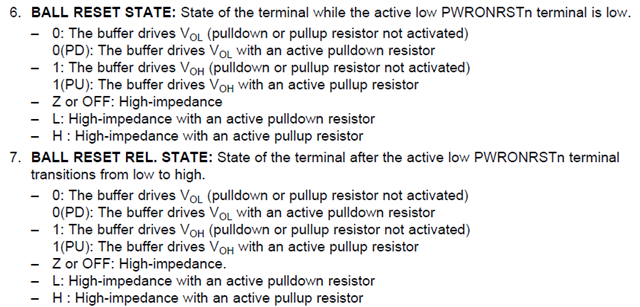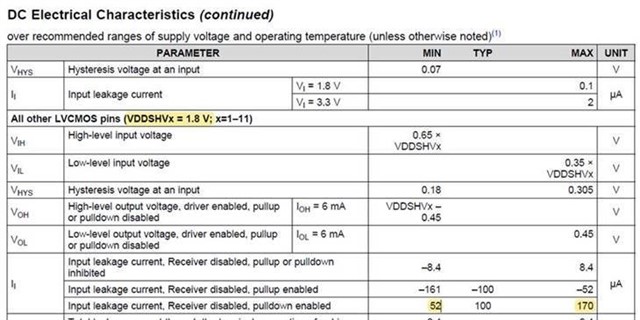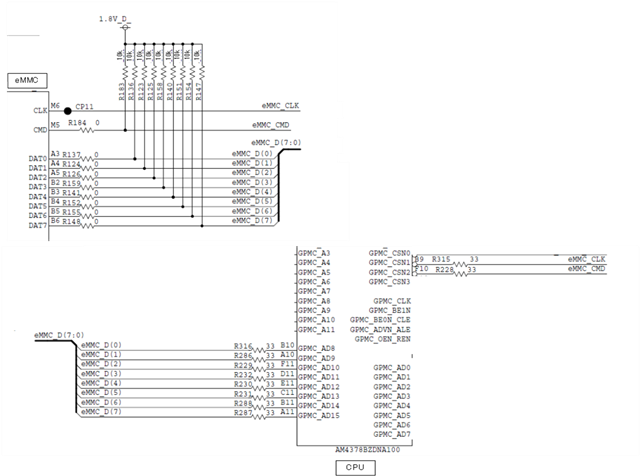Hi Support Team,
I have received a question from my customer as follows.
*Customer question*
When an eMMC is connected to MMC1 of the CPU, there is a possibility
that an intermediate potential is generated by the internal pull-down (10.58k to 34.61kΩ),
external pull-up resistor (10kΩ) and internal pull-up resistor (10k to 150kΩ) of eMMC
during CPU reset (and immediately after reset release). Is this a problem?
The following is an explanation of the above conditions.
Pull-down resistors inside the CPU
AM437x Technical Reference Manual "5.2.6.5.8 Pins Used" states that
dat0-3 should be assigned to gpmc_ad8, gpmc_ad9, gpmc_ad10 and gpmc_ad11 when Booting MMC1.

Checking Table 4-10, Pin Attributes in the datasheet, gpmc_ad8, gpmc_ad9, gpmc_ad10,
and gpmc_ad11 have BALL RESET STATE and BALL RESET REL. STATE set to "L" and are pulled down
internally.

-The pull-down resistor values inside the CPU are calculated as follows.
All other LVCMOS pins (VDDSHVx = 1.8 ) with internal resistance valid for Pulldown
VDDSHVx = 1.8
Internal resistance Min. = 1.8V/170μA = 10.58kΩ
Internal resistance Max. = 1.8V/52μA = 34.61kΩ

-External pull-up resistors
Checking the schematic checklist, there is a section "2.6 MMC" that says
- When connecting a device (card or eMMC), include 10k pullups on RST#, CMD, and all DAT signals.
It is recommended to use external pullups on 10kΩ.
In addition, the JEDEC standard (JESD84-B50) "10.3.4 Bus signal line load"
also lists an external pull-up resistor of 10 to 100kΩ as a requirement for DAT1-7 of eMMC.
-Internal pull-up resistor of eMMC
JEDEC standard (JESD84-B50), "10.3.4 Bus signal line load" states
Internal pull up resistance DAT1-DAT7 is described as 10k to 150kΩ.
If you have unclear points, please let me know.
Best regards,
Kanae


